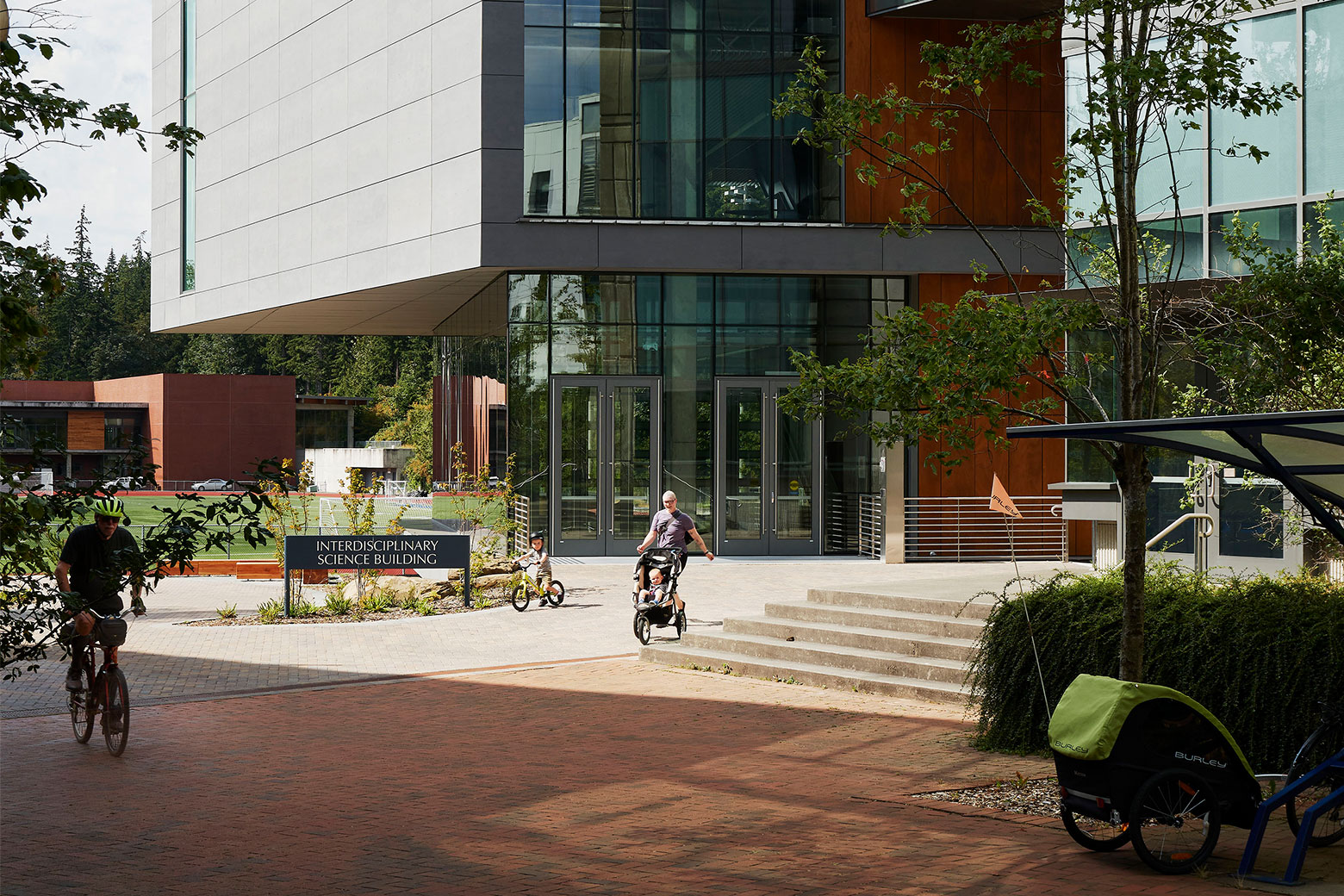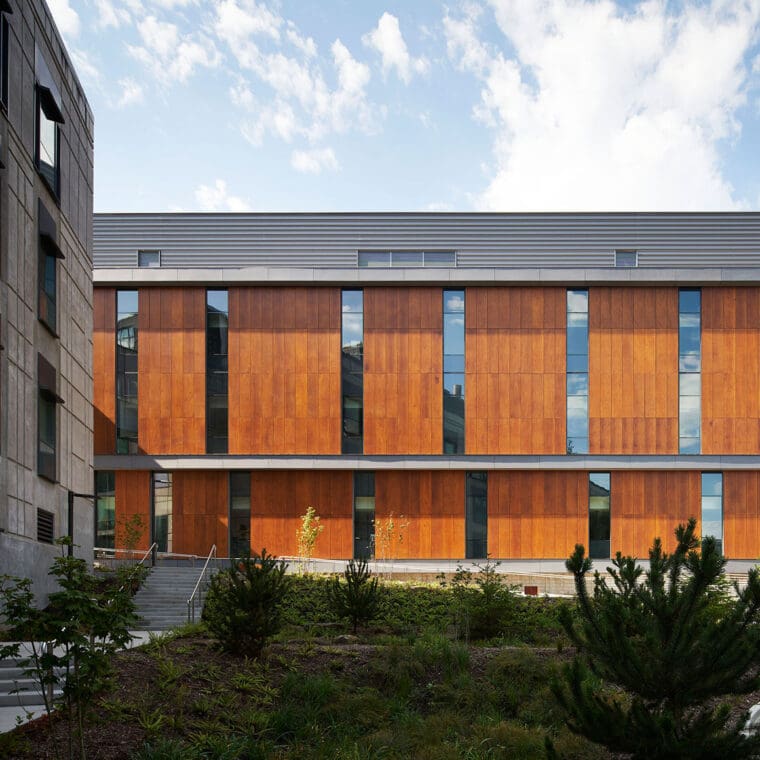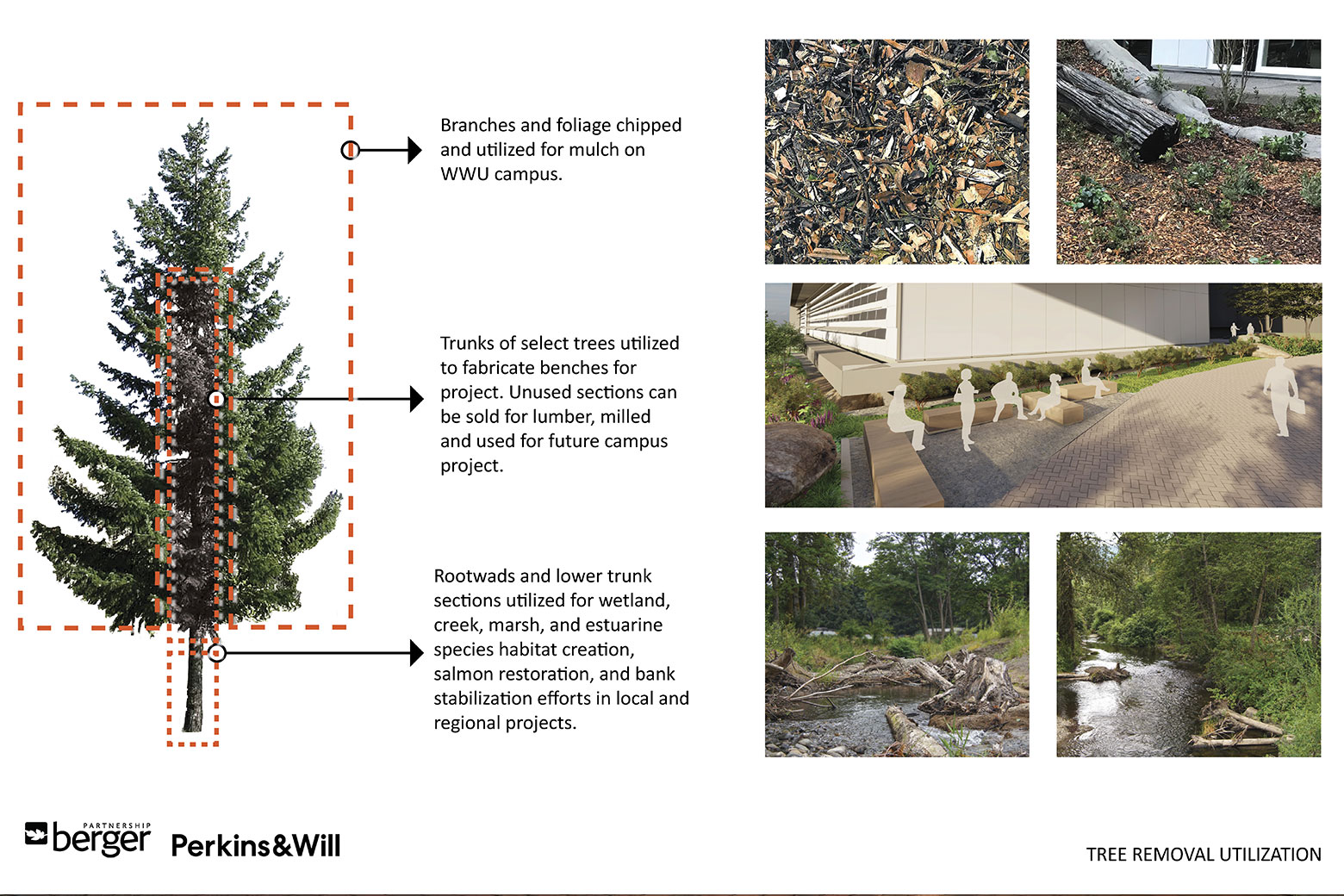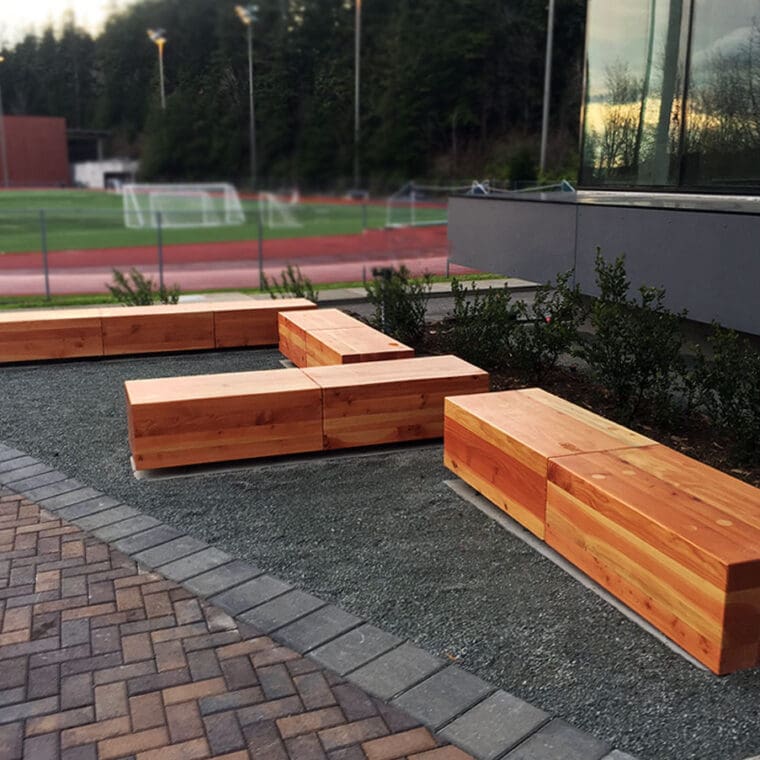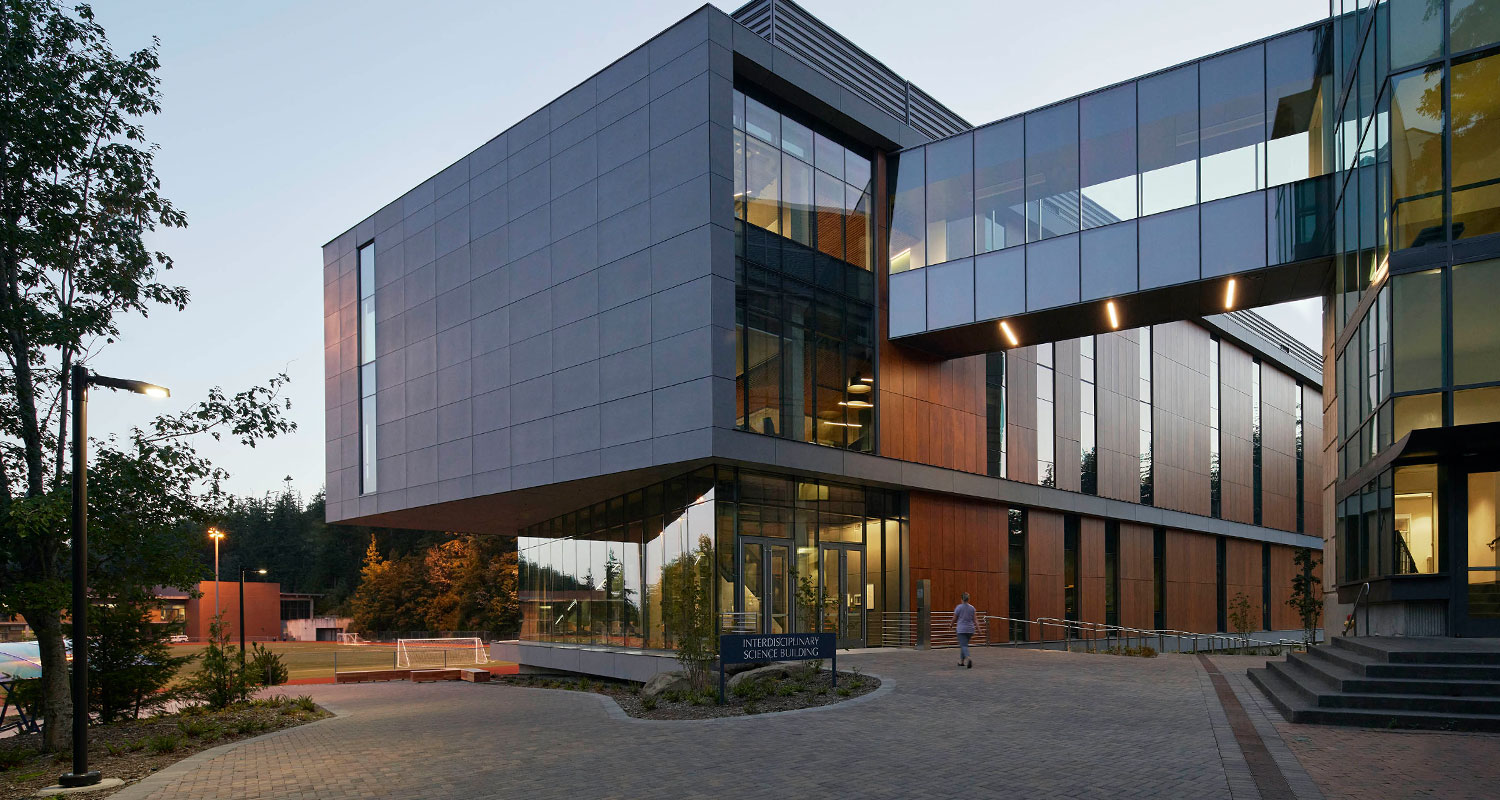
Western Washington University Interdisciplinary Science Building
Bellingham, WA
Located along a major pedestrian spine, the Interdisciplinary Science Building and site are important additions to the Western Washington University campus educationally and ecologically, both serving to connect people to place. Providing a connection between two campus precincts, this is the only exterior, fully accessible route between the south campus, upper Haskell Mall and the campus core. The planting celebrates the local native conifer forests and wetland habitats, expressed throughout the site as green infrastructure, salvaged wood, and native plantings. Green roofs soften the building’s transition to the existing landform.
Native ecologies and habitats are supported and expressed throughout the site as green infrastructure, repurposed material and a restored native forest. Green roofs and vegetated walls assist with managing steep grade transitions and soften the building’s transition to the existing landform. A bioretention system manages runoff from the loading dock and parking lot, and rooftop stormwater is collected in a native habitat. As collocated facilities, the bioretention and stormwater habitat form a tiered pond that demonstrates on-site water management experientially.
Bellingham, WA
Located along a major pedestrian spine, the Interdisciplinary Science Building and site are important additions to the Western Washington University campus educationally and ecologically, both serving to connect people to place. Providing a connection between two campus precincts, this is the only exterior, fully accessible route between the south campus, upper Haskell Mall and the campus core. The planting celebrates the local native conifer forests and wetland habitats, expressed throughout the site as green infrastructure, salvaged wood, and native plantings. Green roofs soften the building’s transition to the existing landform.
Native ecologies and habitats are supported and expressed throughout the site as green infrastructure, repurposed material and a restored native forest. Green roofs and vegetated walls assist with managing steep grade transitions and soften the building’s transition to the existing landform. A bioretention system manages runoff from the loading dock and parking lot, and rooftop stormwater is collected in a native habitat. As collocated facilities, the bioretention and stormwater habitat form a tiered pond that demonstrates on-site water management experientially.
